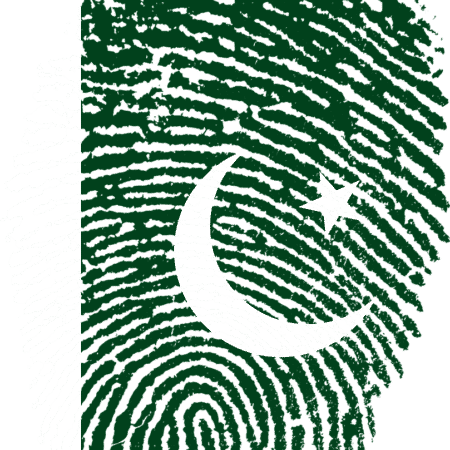
Pakistan Institute of Development Economics
- Home
Our Portals
MenuMenuMenuMenuMenuMenuMenu - ResearchMenuMenuMenuMenuMenuMenuMenu
- Discourse
- The PDR
- Our Researchers
- Academics
- Degree Verification
- Thesis Portal
- Our Portals

How digital we are? (Blog)
COVID-19 and Digitization
COVID-19 has changed a lot and digitalized us. In this lockdown, peoples are doing everything from education to office work online at home. But do we know how many of us have access to the internet? And can we gauge the person’s backwardness by whether they have a computer, smart phone and internet? Let us estimate from the data of Household Integrated Income and Expenditure Survey (HIES) 2018-19 on ICT indicators.
| Province | Household Count |
|---|---|
| Khyber Pakhtunkhwa (KPK) | 3,800 |
| Punjab | 8,484 |
| Sindh | 4,551 |
| Balochistan (BA) | 1,978 |
| TOTAL | 18,813 |
According to this dataset (see Table 1), only 7% of the individuals[1] have the availability of computers and only 67% of them have computers at home. But don’t worry too much about the 7% because people in developing countries are sharing luxury commodities with each other. Therefore, 17% of household[2] have computers. Interestingly, those who do not have a device say that the major reason is that they do not know how to use it, and 25% say they use a smart phone instead. According to this data, only 14% of individuals have a smartphone.

Source: Calculations are based on HIES 2018-19
Internet Facility Availability
If we look at the availability of internet facility, we find that only 16% of individuals have used internet in last 12 months and about 80% use it at home. 87% individuals are using internet for entertainment and only 4% for research and education. Again what is interesting is the reason why they don’t use internet. The major reason cited is not cost, but the belief that they don’t need it and don’t know how to use it.
If we look at this information for the provinces, Balochistan is the most backward in terms of digitalization having low availability of computers, smart phone and internet. And perhaps unsurprisingly, Punjab leads in digitalization.
Digital Inequality
As information, services and resources move online, digital inequality comes as a form of social inequality and will be the greatest challenge. Now we move to measure the use of internet depending upon the socioeconomic conditions of the individual. An index[3] which measures the socioeconomic condition of an individual which includes availability of durable goods, per capita expenditure (as a measure of per capita income) and average education of individual aged 18 or over of each household. Then define disadvantage individual are those belonging to the 30% of the lowest value of the index and advantage individuals saturating in 30% highest index. In Table 2, we see only 1% of disadvantaged individuals and 28% of advantaged individuals are using the internet.

Source: Calculations are based on HIES 2018-19
Based on this information we can easily find the socioeconomic digital segregation by using D-index[4]. According to the D-index, the socioeconomic digital segregation among the disadvantage and advantage group is 0.498 or approximately 0.50, which indicates the hyper segregation.
Government Steps
In the view of this segregation, an effective step of the government is to launch a first educational channel on TV called teleschool. It is delivering content for grades 1 to 12 from 8 am to 5 pm every day. How many people can benefit from it? It depends on whether their children are going to government school and have a TV. According to PSLM 18-19, 51% of households have TV. A teleschool is a stop-gap policy measure and only effective in the short-run. Why? Because its only objective is to provide education according to the curriculum of government education. Assessment of the student is not the goal, so there is no way to determine how much the student has absorbed or learned.
In our case, the student fails unless he memorizes the lesson. Many people do not know about this channel because their children are going to private school. So public school education is not a concern for them at all. As per PSLM 18-19 (see Table 3), 56% of students are going to government schools and only 49% of these students have a TV at home. Therefore, this program is not effective in reaching the majority of students, the remaining 71%.

Source: Calculations are based on PSLM 2018-19
Final Thoughts
The majority of our private schools and universities are taking online classes, but internet access for students and faculty alike remains a key challenge. In terms of digitalization and access to information communication technology, Pakistan lags far behind other countries. In the Digital Evolution Index 2017, Pakistan was ranked 56th out of 60 countries. It is in the low trust equilibrium zone where users tend to be less engaged and less patient with frictions online. To make Pakistan digital brings more challenges which need to be addressed both in policy making and implementation.
[1] ICT indicators are for individual 10 years and above. 115632 are total individuals and among them 23668 belongs to KPK, 50493 belongs to Punjab, 28394 from Sindh and 13077 from Baluchistan.
[2] 24809 households are in the sample.
[3] Principal Component Analysis is used for index calculation

[4] Duncan and Duncan (1955) introduced the D-index for segregation measurement. It ranges between [0:1], where 0 represent a complete even distribution and 1 represent an absolute uneven distribution. If this index exceeds 0.5, it is consider as hyper segregation. It is calculated by , where i represent the disadvantage and advantage group.
Download full PDF


